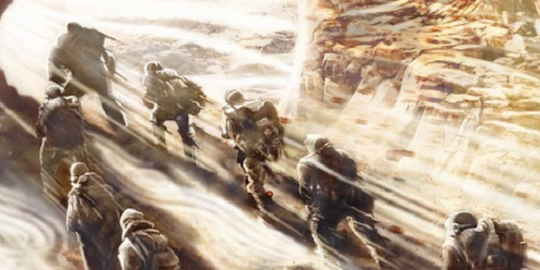The Horde of Counterwind, written by the French writer Alain Damasio, takes place in a world of violent winds where a band of hardened, élite travelers make their arduous way toward the Upper Reaches, from where the winds are said to originate. Translating the thickly packed, virtuosic prose of this singular Science Fiction/Fantasy epic is a bit like having to join the Horde to battle against the winds. Skeptical readers have declared the Horde untranslatable, filled to the brim as it is with wordplay and even a long jeu-parti, or poetic duel, between the improvising troubadour Caracole and his ultraformalist counterpart, Seleme the Stylite. The poetic duel involves palindromes, among other enormous challenges to the translator. Translation, through the Horde of Counterwind, becomes a test of vigor and endurance for both writer and translator, who must faire bloc—become a single vital force—before the shattering gale of language.
Yet the Horde’s translator ultimately spends a great deal more time working on single words than on entire passages. The most difficult task facing the translator of the Horde, and indeed of many works of so-called speculative fiction, lies in the proper rendering of the novel’s innumerable neologisms. Within the first page, the Horde’s translator is called upon to translate the word furvent, a term denoting one of the most violent forms of the wind. After several hours of live discussion by Skype, and after brainstorming literally dozens of possible alternatives, Damasio and I settled on the term threshgale. Furvent derives in large part from the word furieux (furious), and the French word for wind (vent), whereas the neologism retains neither component, preferring winnowing and thrashing to fury, and the storm or gale in place of the mere wind.

